


Recognition of First National people in the NSW Constitution was achieved in 2010 and there have been no adverse consequences of this symbolic recognition. If NSW can do it – why can’t Australia as a whole?

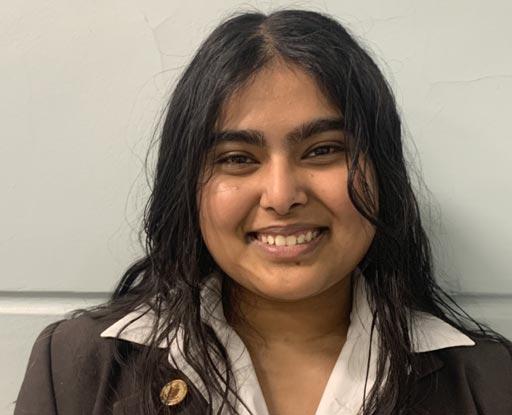







Recognition of First National people in the NSW Constitution was achieved in 2010 and there have been no adverse consequences of this symbolic recognition. If NSW can do it – why can’t Australia as a whole?





Over its five decades of community engagement and striving for social justice, Inner Sydney Voice has advocated for many social causes. This has required strong allyship with all sorts of diverse groups that make up our strong and vibrant Inner Sydney community.
ISV took some time to consider its viewpoint on the Voice to Parliament. We could see that this was a challenging position for the 3% of Australians who identify as First Nations people to address 250 years of wrongful appropriation of their lands.
The cultural burden was on the First Nations people to ‘prove’ to others the validity of their claim for recognition and justice. This referendum is about two simple things:
1. Constitutional recognition:
This is a self evident fact - First Nations people have always been and remain- the First People of the Land now called Australia. Many constitutions of other colonising nations have the good grace to recognise their First Nations people. Australia is an outlier here. We must do better to address our collective shame, even if we personally were not the cause of it. It is symbolic, but symbols are powerful.
2. An elected representative advisory body of First Nations people: The impermanence of First Nations’ advisory bodies as outlined on pages 22-23 has frustrated the provision of a clear communication of the needs of First Nations people across Australia to the Parliament and the Executive. All types of business, industry, professional and community interests have ar advisory body at a national level. All
paid for by the Australian taxpayerbut there was no ongoing community-elected First Nations advisory body.
Our first approach was to make contact with First Nations groups in the region to seek their views.
The Lands Councils, the First Nations peak bodies, the Aboriginal controlled service delivery bodies. It was clear this was a challenging time for many groups to navigate. There were differences of opinion within these communities and organisations. Further, non-Aboriginal controlled organisations who provide services across the community, including to First Nations people, were initially reluctant to put their heads above the parapet and openly support the YES campaign.
How then should we respond? A key factor after discussions with some First Nations leaders was the fact that polling consistently showed over 80% of First Nations people supported the proposed consututional recognition and voice proposals. The point was made repeatedly that First Nations people had developed this proposal and made an invitation from the heart for all Australians to walk with them.
ISV has taken up this warm invitation. We have attended community YES activities and have run information sessions for our members. We have documented the many people from the Inner Sydney region who have sounded a strong and generous YES in response to the Uluru Invitation.
An objection expressed by some First Nations people was that by coming ‘under the Constitution’, First Nations people were ceding their sovereignty. We sought advice from various legal scholars, including Tony McAvoy SC, one of the country’s most senior Aboriginal barristers. He had written a legal advice, which concludes
that “within the understanding of international law, First Nations sovereignty will not be impacted by the referendum for, and subsequent constitutional enshrinement of, an Aboriginal and Torres Strait Islander Voice”.
In the 2021 Charles Perkins Memorial Oration, Mr McAvoy advocated for the establishment of truth commissions and treaties with Australia's First Peoples, labelling the often-used assertion that Aboriginal people should “stop living in the past” as “not possible”. However, a treaty is a binding agreement between two or more parties. A treaty sets out the terms of engagement and obligations of all sides to maintain the agreement. NewZealand (Aotearoa), Canada, Norway, Sweden, Finland, Japan, Greenland and the US have all negotiated treaties with the Indigenous peoples in their countries. The sad fact is Australia has not.
ISV supports the process of Truth, Treaty and Voice. No matter the outcome of the referendum, work to progress these three elements should continue. Various States, including NSW, have started Treaty processes; the Commonwealth has funded an Makarata Commission and the Australian Parliament can legislate a Voice to Parliament. We trust in the hearts of the Australian people to ensure a warm and heartfelt constitutional embrace of First Nations People and their 65,000 years of cultureandwisdom.
ISV will continue to support First Nations people in this journey. With the lead given by the 3% it’s up to the 97% to do more of the heavy lifting and ease the cultural load on First Nations people. ISV supports the process of Treaty in NSW.
Peter Connelly, Chairperson, Inner Sydney VoiceAboriginal culture in Australia dates back more than 65,000 years, during which time strong systems of law/ Lore developed. Before British colonisation, more than 250 languages and 800 dialects were spoken in Australia. Colonisation and government policies deliberately suppressed the speaking of these languages, resulting in many becoming endangered or lost.
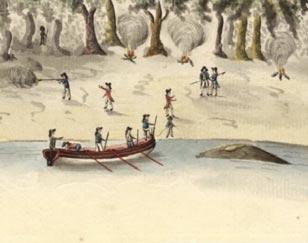
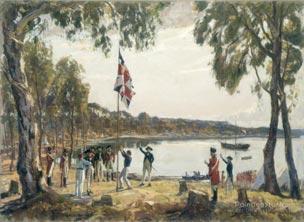
Non-Aboriginal Australia disrupted centuries of harmonious existence. Previously, The Land was honoured; Spirit was revered, clear boundaries of “Country” were respected; Tradition, Culture and Lore ensured ecological systems were preserved and enhanced. There were a range of settlements, and seasonal lands were worked as integrated farming and fishing systems. There were economic systems and well-developed trade routes both nationally and internationally. Indigenous astronomy and scientific knowledge were refined over millennia. There was not one nation or culture; but many nations and cultures on the land now called Australia. It is a land mass larger than Europe. Do we expect Europe to be homogenous?
Colonisation by the English did not begin here. The colonial project was instigated in Ireland and Scotland and
then exported across the globe, with an all too familiar playbook.
The Gaelic language was prohibited; traditional garb, such as the kilt, was banned. People were removed from their traditional lands and it was given to the new foreign settlers, the Plantation Farmers. Traditional owners were removed or only allowed to eek out a survival life on marginal land or serve as indentured labour. The Poorhouse system dehumanised and exploited poor people creating an incarcerated underclass.
This is the shared ancestry of many Australians; many others escaped from hostile regimes and war-torn lands. Hopefully this engenders a sense of compassion and honouring of the oldest First Nations People on this planet. Many of the ‘convicts’ were disposed people from the “United” Kingdom (sic).
Non-Indigenous Australians need to honour the lands of the First Nations People of Australia and to begin to learn from them how this land can best be managed: how to use fire; how to care for the country to sustain life; how to manage water in a drought-prone
land; how to understand the ocean and properties of the amazing plants and animals indigenous to these lands.
So, who has responsibility to address the injustices of colonisation? Should it be the victims of colonisation or should others play a part?
With just 3% of the total population (with fewer than half that number being of voting age), the result of the referendum will be decided by nonIndigenous Australians. We know 80% of First nations leaders and people have overwhelmingly given support to the Voice to Parliament.
The following brief review of key milestones in the evolution of bodies for an Indigenous voice and provide insights into why previous attempts have failed. When governments do not like what they hear, they close down the source of advice. Something different is needed — constitutional recognition of a Voice to Parliament is needed. And it’s up to the non-First Nations people of Australia to come together and start taking on some of this cultural load.
1788 The British establish a colony at Port Jackson, Sydney Cove on Gadigal Country, known as Warrane, by the Eora people.
1790 The Gayamaygal and other Eora people feast on a whale carcass at Manly Cove and invite Governor Phillip. He is speared according to Lore for the deaths of Aboriginal people brought by the white visitors.
1900 The Constitution of the Commonwealth of Australia specifically excludes Aboriginal people from federal government responsibility. The state and territory governments manage all matters relating to Aboriginal people, with the intention to ‘smooth the dying pillow’ and assuming the Aboriginal race would die out.
1902 The Commonwealth parliament passes its first law on federal voting (the Commonwealth Franchise Act 1902), granting men and women in all states the right to vote in federal elections. The Act did, however, specifically deny federal voting rights to every “aboriginal native” of Australia, Asia, Africa, or the Islands of the Pacific (except New Zealand) who, at the time of the Act, did not already have the right to vote in state elections.
1924 The Australian Aboriginal Progressive Association is formed and becomes the country’s first politically organised, united Aboriginal activist group with 13 branches, four subbranches and more than 600 members in New South Wales (NSW). The AAPA campaigns for Indigenous rights to land ownership, citizenship, control over their own affairs, and an end to the practice of removing Aboriginal children from their families.
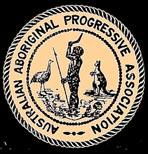
The group is vehemently opposed to the involvement of the NSW Aborigines Protection Board in the lives of Aboriginal people, and calls for its abolition, demanding that Indigenous affairs be managed by Indigenous people.
The AAPA also focuses on:
n stopping the removal of Aboriginal children from their families
n gaining equal citizenship for Aboriginal people
n protecting Aboriginal cultural identity
n ensuring Indigenous communities and families could provide for themselves and their future through land ownership.
Under strong pressure from government and law enforcement agencies, the organisation ceases widespread public activity at the end of 1927.
1936 The Australian Aboriginal League is established in Melbourne and campaigns for the repeal of discriminatory legislation and for programs to “uplift the aboriginal race”. The League petitions King George V in 1933 for Indigenous Australians to be represented in the Australian Parliament, among other requests.
1937 Yorta Yorta elder William
Aboriginal men and women gather at Australia Hall in Sydney for the Day of Mourning protests. Participants come from across Australia to continue a struggle that began 150 years ago.
1944 A referendum to give the Commonwealth an extra ten short-term powers, including the “ability to legislate for Indigenous Australians”, fails.
1948 The Commonwealth Nationality and Citizenship Act 1948 creates “Australian citizenship” for the first time. Aboriginal and Torres Strait Islander (ATSI) people are technically included as citizens but are still unable to vote — one of the key privileges of citizenship — despite many First Nations people serving in the armed services.
1958 The Federal Council for the Advancement of Aborigines and Torres Strait Islanders (FCAATSI), a civil rights organisation campaigning for the welfare of ATSI people is established. It is the first national body representing Aboriginal interests. FCAATSI plays a leadership role among Indigenous and associated organisations in the 1960s and early 1970s, particularly in campaigning for the 1967 referendum.
1962 The Commonwealth Electoral Act 1918 is amended to enable all Indigenous Australians to have the option of enrolling to vote in federal elections. Enrolment is not compulsory for ATSI people, unlike other Australians. Once enrolled, however, voting becomes compulsory.
1963 The two Yirrkala Bark petitions are presented to the Australian parliament.
Cooper’s letter to King George VI on behalf of the Australian Aborigines League is not passed on by the Australian government. The original petition, including 1,814 signatures from First Nations people, is lost by the Australian government.
1967 More than 90% of Australians vote ‘yes’ in a referendum to allow the Australian government to make laws for ATSI peoples.
1967-76 The Council for Aboriginal Affairs is established by LNP Prime
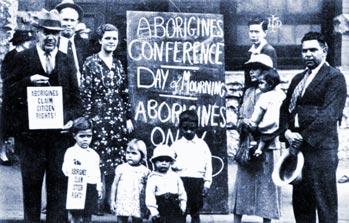
Minister Harrold Holt and chaired by Dr HC ‘Nugget’ Coombs, and an Office for Aboriginal Affairs is established, reporting to the Prime Minister.
1968 First Minister for Aboriginal Affairs Bill Wentworth is a forthright spokesman for the Liberal Party on Aboriginal issues. He spends time each year in Central Australia where his meetings and friendships with Aboriginal people gave him some insights into the difficulties they faced, a respect for cultural difference and the opportunity to think about policy directions that might suit the people concerned.
1972 The Aboriginal Embassy is erected in front of Parliament House in Canberra to demand land and other rights on Australia Day, 26 January.
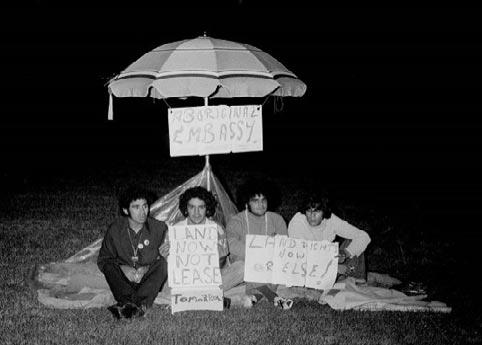
The National Conference of Aboriginal and Torres Strait Islander Advisory Councillors is created in response to the Aboriginal Tent Embassy and other Aboriginal rights campaigns, the McMahon LNP government creates a National Conference of 66 appointed Aboriginal and Torres Strait Islander Advisory Councillors, which it states would provide “a truly representative expression of Aboriginal views”.
A Royal Commission into Land Rights is established by the Whitlam Labor government. After years of struggle and lobbying, Gurindji man Vincent Lingiari is given back his land by Prime Minister Gough Whitlam in 1975. Following the failure of the Gove lands rights case, the Whitlam government instigated an inquiry into Aboriginal land rights (known as the Woodward Commission), which eventually led to the Fraser Liberal government passing
the Aboriginal Land Rights (Northern Territory) Act 1976.
1973-77 National Aboriginal Consultative Committee (NACC) is established to support the aim of Aboriginal self-determination. In 1973 the Whitlam government creates Australia’s first elected Indigenous representative body, the National Aboriginal Consultative Committee (NACC), to provide advice on Aboriginal policy. More than 27,000 Indigenous people vote to elect 41 members of the NACC. It clashes with the incoming Fraser LNP government and is abolished.
1979 The NAC raises the idea of a treaty or Makarrata “between the Aboriginal Nation and the Australian Government”. In response to the NAC’s advocacy, the Fraser LNP government establishes a Senate Standing Committee on Constitutional and Legal
Affairs “on the feasibility of a compact, or ‘Makarrata’, between the Commonwealth and Aboriginal people”.
1983 The Senate Committee’s report Two Hundred Years Later, is released, rejecting the word ‘treaty’ as unrealistic given Indigenous peoples’ lack of international standing, but recommends that a compact or Makarrata could be created based upon a proposed new constitutional section 105B, granting a power for the Commonwealth to enter into a compact with representatives of the Aboriginal people. (Existing section 105A provides for financial agreements between the Commonwealth and the States.)
1984 ATSI people gain full equality with other electors under the Commonwealth Electoral Amendment Act 1983, making enrolment to vote at federal elections compulsory for Indigenous Australians.
1985 On October 26, the Governor-General hands Uluru back to its Anangu owners with the Anangu leasing the land back to the Australian National Parks and Wildlife Service (now Parks Australia) for 99 years with joint management arrangements.
1988 The Barunga Statement — demanding rights and recognition for Aboriginal peoples is presented to ALP Prime Minister Bob Hawke and tens of thousands of Australians protest the lack of ATSI rights during Australia’s bicentenary.
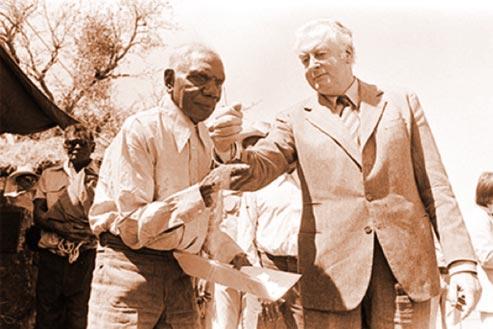
1989-2005 The Hawke Labor government establishes the Aboriginal and Torres Strait Islander Commission (ATSIC), a statutory authority to both represent and deliver services to ATSI people.
1991 The Australian parliament unanimously passes the Council
for Aboriginal Reconciliation Act 1991, formally launching a process of national reconciliation.
1992 Labor Prime Minister Paul Keating delivers the Redfern Statement on Aboriginal Reconciliation as part of International Year of Indigenous People conceding the violence and dispossession perpetrated against Aboriginal and Torres Strait Islander people across the continent that has long remained unacknowledged.
The Australian High Court delivers the Mabo decision, the culmination of Eddie Koiki Mabo’s challenge to the legal fiction of ‘terra nullius’ (land belonging to no one) and leading to the legal recognition of ATSI peoples as the Traditional Owners and Custodians of lands. The decision paves the way for Native Title.
1993 The Keating government passes the Native Title Act 1993, providing a mechanism for ATSI peoples to claim back some of their ancestral lands.
1995 Bring them Home Inquiry into the Stolen Generations begins in May.
1996 The Council for Aboriginal Reconciliation expands the Week of Prayer for Reconciliation to launch Australia’s first National Reconciliation Week.
1998 National Sorry Day is marked for the first time, commemorating the “Stolen Generations” — Aboriginal Australian and Torres Strait Islander children who were forcibly separated from their families in an attempt to assimilate them into white Australian culture during the 20th century.
2000 Hundreds of thousands of Australians walk across Sydney Harbour Bridge as part of Corrobboree
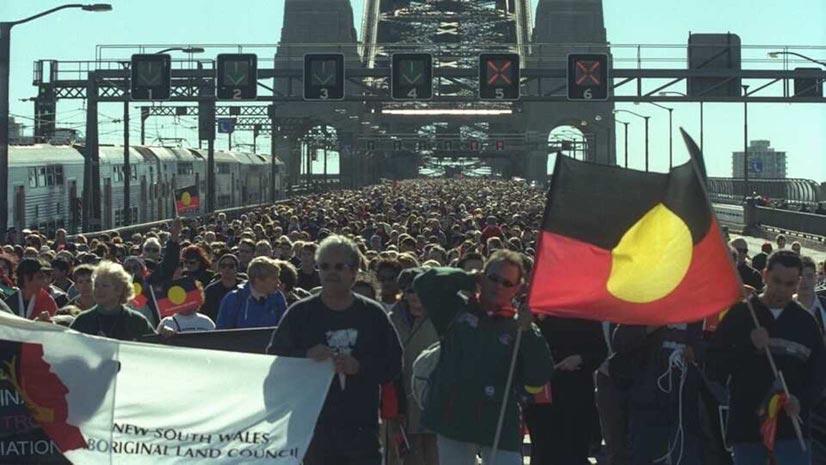
2000 to show support for ATSI aspirations.
Dozens of high-profile Indigenous and non-Indigenous leaders meet at the Sydney Opera House on 27 May. This meeting is described as “a ceremonial gathering of Australians to exchange commitments in the lead up to the centenary of Federation in 2001”.
One commitment is the Australian Declaration Towards Reconciliation; the other the Roadmap for Reconciliation. The essence of the declaration is conveyed in its final paragraph:
“Our hope is for a united Australia that respects this land of ours; values the Aboriginal and Torres Strait Islander heritage; and provides justice and equity for all.”
All the leaders who took part leave their handprints on a reconciliation canvas – a symbolic act of great significance in Indigenous traditions. Liberal Prime Minister John Howard, who skirted around the issue of an apology by expressing ‘regret’ for past wrongs refuses to add his hand print. Howard feels it is not the responsibility of present generations to apologise for past practices. Many in the audience stand and turn their backs on him.
2001 Reconciliation Australia is established after a recommendation
from the Royal Commission into Aboriginal Deaths in Custody, which proposes the country urgently needs a formal process of reconciliation between Aboriginal and Torres Strait Islander and non-Indigenous peoples.
2005–07 Prime Minister Howard appoints a hand-picked National Indigenous Council (NIC) to provide advice to government. The NIC is chaired by Aboriginal magistrate Sue Gordon. It is not seen as being representative and is perceived as lacking a mandate. It is dissolved by the Rudd Labor government in early 2008.
2008 Prime Minister Kevin Rudd formally apologises to the Stolen Generations on behalf of the Australian parliament and people.
2009–19 National Congress of Australia’s First Peoples (NCAFP) is founded in November 2009 after a design process led by Aboriginal and Torres Strait Islander Social Justice Commissioner Tom Calma, as a standalone corporation to function as the representative body for ATSI people and organisations. It is created as a corporation rather than a government body, so it could not be dissolved by
government fiat. In 2010, it announces its members and appoints its first national executive. It ceases in 2019.
2010 NSW Constitution is amended to acknowledge and honour the Aboriginal people as the first people and nations of the state, recognising their spiritual, social, and cultural relationship with their traditional lands and waters and their unique and lasting contribution to the identity of NSW.
2013 With bipartisan support, the Australian parliament passes the Aboriginal and Torres Strait Islander Peoples Recognition Bill 2012, recognising the unique and special place of First Nations peoples as the original owners of the Australian continent and islands.
After the election, the Abbott LNP government appoints a new Prime Minister’s Indigenous Advisory Council (PMIAC), and appoints a National Commission of Audit, which subsequently criticises the NCAFP as “duplicat[ing] existing Indigenous representative advisory bodies” (p. 176), apparently referring to the PMIAC. The NCAFP is subsequently defunded in the 2014-15 Budget. It ceases operations in 2019.
2015 Kirribilli Statement is developed by 40 First Nations Leaders after cuts to funding of First Nations’ organisations and calls for constitutional recognition that is not just symbolic.
2015 The Referendum Council is appointed by Liberal Prime Minister Malcolm Turnbull and Leader of the Opposition Bill Shorten. Its purpose is to advise on progress toward a referendum to recognise Aboriginal and Torres Strait Islander peoples in the Australian Constitution.
2016-17 Twelve Dialogues are conducted by First Nations leaders across Australia on what constitutional recognition means to each community. A Voice to Parliament is chosen as top
choice in each Dialogue as the recommended way forward.
2017 The National Constitutional Convention at Uluru releases the Uluru Statement from the Heart, a unified statement to the Australian people calling for an Indigenous voice to parliament, the establishment of a Makarrata Commission to develop agreements or treaties, and a process of truth-telling. It was signed by 250 delegates representing 100 nations. This process was designed and led by First Nations People.
Prime Minister Turnbull rejects the Uluru Statement erroneously arguing it would become a third chamber of the Australian Parliament.
2018–2019 Liberal Prime Minister Scott Morrison appoints former Prime Minister Tony Abbott as ‘Special Envoy for Indigenous Affairs’. Abbott states his focus would be on improving remote school attendance.
2018 A Joint Select Committee of Parliament, co-chaired by Senators Patrick Dodson (ALP) and Julian Leeser (LNP), considers the work of the Referendum Council and finds the Voice the only viable recognition proposal and recommends the government “initiate a process of codesign [of the Voice] with Aboriginal and Torres Strait Islander peoples”.
2019-present Coalition of Aboriginal and Torres Strait Islander Peak Organisations (Coalition of Peaks) — a non-incorporated non-government organisation, made up of over 80 Aboriginal and Torres Strait Islander community-controlled peak and member organisations across Australia — indicates The Voice is also about guaranteeing Aboriginal and Torres Strait Islander people a say in matters affecting them, something that is at the heart of the National Agreement on Closing the Gap and the work of the Coalition of Peaks.
A Constitutionally-enshrined Voice
won’t negate the work governments are required to do under the National Agreement. Neither will the Voice change the necessary role of community-controlled peak bodies and organisations to deliver services and supports for our people, and to advocate for Aboriginal and Torres Strait Islander people in the areas they have expertise. Alongside the National Agreement and the partnership between governments and the Coalition of Peaks, the Voice, Truth Telling, and Treaty will provide our nation with the complete roadmap to improve the life outcomes of our people.
2019 In its pre-election budget the LNP government commits $7m to the Uluru Statement Co-Design Process and $160m to running a referendum. Minister for Indigenous Australians, Ken Wyatt, announces a ‘co-design’ process to determine the structure and functions of the Voice. The constitutional enshrinement of the Voice was excluded from the terms of reference.
2020 Tens of thousands of Australians attend Black Lives Matter marches in cities across the country to protest Aboriginal and Torres Strait Islander deaths in custody and high rates of incarceration of First Nations peoples.
2021 The Interim Report on the Indigenous Voice Proposal is released and The Uluru Statement wins the Sydney Peace Prize with co-laureates Pat Anderson, Megan Davis and Noel Pearson.
2022 Incoming ALP Prime Minister Anthony Albanese reconfirms his commitment to implement the Uluru Statement in full during his election victory speech.
2023 More than 80% of First Nations people support the Voice to Parliament. It’s been initiated and led by First Nations people. It’s up to nonIndigenous Australia to determine what happens next!
October 14th has been announced as the date for the upcoming Australian Indigenous Voice referendum. Everyone calls it The Voice. It has infiltrated our zeitgeist, becoming a defining factor of your political views and your attitudes towards Indigenous peoples. While parties all across the spectrum have put forth their opinions on whether to vote ‘Yes’ or ‘No’, there has been a considerably silent demographic on this issue.
Young people across Australia may have some of the most important things to say about this referendum, but their voices are either being entirely disregarded, or they simply aren’t speaking up about their views.
Late June, I asked a couple of young people across Sydney their thoughts on the Referendum. There seems to be either a positive impression or a blanket unawareness about the issue, with lots of young people needing a reminder or definition of what exactly the Voice consisted of. When necessary, I provided the
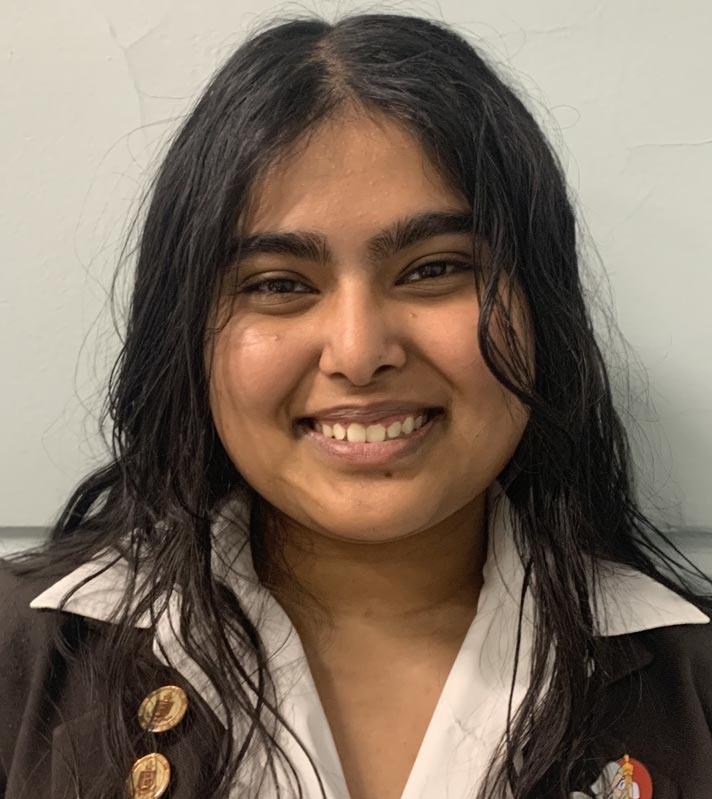
proposed Constitutional amendment to participants:
In recognition of Aboriginal and Torres Strait Islander peoples as the First Peoples of Australia:
1. There shall be a body, to be called the Aboriginal and Torres Strait Islander Voice;
2. The Aboriginal and Torres Strait Islander Voice may make representations to the Parliament and the Executive Government of the Commonwealth on matters relating to Aboriginal and Torres Strait Islander peoples;
3. The Parliament shall, subject to this Constitution, have power to make laws with respect to matters relating to the Aboriginal and Torres Strait Islander Voice, including its composition, functions, powers and procedures.
While I didn’t stick to only the youth of inner Sydney when conducting my interviews, a majority of them either lived or worked in the area. Most of them also said they would vote ‘Yes’; in sharp contrast to various polls conducted by news agencies and research institutes, all of which have been showing a rapidly declining number of ‘Yes’ votes.
It seems that the ‘No’ side’s slogan of ‘If you don’t know, vote ‘No’, has enraptured voting age Australians and quickly turned the tide. As the campaigns for the Voice continue, the public has gained more and more info on why exactly to vote ‘No’, ranging from ‘too risky’ to ‘extremely divisive’.
Divya, an 18-year-old hailing from the Hills Shire, has a different mindset. “I know [the Voice] is fairly divisive but most Indigenous folks aren’t super for it because it’s enshrining a right to Voice within a colonial institution, which is just putting power back into colonial hands, rather than making steps towards decolonisation . . . Right now, the plan is vote ‘No’.”
Online discussion from a left-wing, ‘No’ perspective all tends to gravitate
towards her idea. The idea of decolonisation is integral to the Voice; simply, where does it fit in within the concept of constitutional, Indigenous inclusion? Does it further entrench Indigenous peoples within a colonial Australia, or does it allow them greater say and potential for further development of anti-colonial ideas?
Young people who said ‘Yes’ tended to have a different take on the matter. Responses ranged from “Indigenous peoples’ . . . voice and their say should count,” to “ ‘Yes’, because ‘Yes’ is good.”
A participant from eastern Sydney emphasised how “non-Indigenous people don’t know or have as much knowledge about the issues [Indigenous people] face, [as] they don’t have the personal experience.” This point has been banked on by the ‘Yes’ campaign. The official referendum pamphlet highlights how initiatives and services conducted in partnership with Indigenous peoples have resulted in positive results, with exceptional improvements within many communities ranging from south-east Queensland to Arnhem Land.
However, the lack of knowledge among many young people about the Voice is a bit jarring. Many said they needed to “do more research”, or they weren’t “too sure what the Indigenous Voice is”, after months of news coverage. Some felt they were engaged in discourse revolving around the referendum, while for others, my questions had been their first exposure to the barrage of discussion about the topic.
There are a variety of reasons as to why this could be happening. Youth pointed fingers at the education system, raising issues with how “people weren’t talking about [Indigenous issues] that much, and we just let it be”. Others argued that specific classes, such as Legal Studies or History, or even co-curriculars like debating, had actually deepened their knowledge on the issue.
There seems to be a general consensus that ‘word of mouth’ is integral to learning about the Voice.
Young people are discussing the issue within their circles, choosing to educate each other or voice their opinions to mates rather than anywhere else. Is this a possible reason as to why we are lacking young voices in particular?
When asking different participants as to why they thought young people weren’t speaking up much about the issue, I got varied responses.
Sixteen-year-old Eugenia claimed it “might be because people don’t think it’s relevant to them, as young people who can’t vote.” Others argued against the education system, with claims that enough had not been done to target, or educate, young people in campaigning.
A surge of sentiment echoed across the ‘Yes’ campaign seems to have almost flipped the ‘No’ slogan into something else. ‘If you don’t know, vote ‘Yes’’, is a common theme throughout this article. Yet it speaks volumes about youth allyship with Indigenous Australians; unfortunately many of us don’t seem to be ‘bothered’ enough to take the extra step in formulating an educated opinion. But when Indigenous people comprise only 3.8% of the population, and almost half of that number is too young to vote, stepping up and spreading awareness is essential in our role of allyship. Even if a majority of us are too young for this referendum, it sets a precedent for future campaigns and it tells our Parliament whether or not we care about Indigenous issues.
There seems to be a consensus that “it doesn’t seem like [the referendum] would make a really big change on each of our individual lives.” While it may seem like that to you, thousands of Indigenous people would disagree.
Sumaya is planning for a career in independent journalism where she can capture the voices of diverse peoples and communities. She is currently in Year 11 at Sydney Girls High School. As a BangladeshiAustralian, Sumaya believes in honesty, and emphasises diversity and initiative. She joined the ISV team in July 2023. This is her first published story.
On these, their lands of the First Peoples, it is with profound respect that I acknowledge the Spirits of Elders past, today’s Elders and emerging leaders. To the North, South, East and West surrounded by the great oceans, seas, rivers, creeks and streams, under the Southern Stars in the celestial heavens, always and forever acknowledging that they continue to be the custodians. Having nurtured these lands for millennia they are and forever will be the oldest continuous culture on Mother Earth, on these lands of the First Peoples.
When I was asked to write an article
on Treaty, I immediately contemplated not where to begin writing and referencing the oldest established culture through millennia but where to draw the line.
Rightly so, today, the focus of the population on this continent centres around the gift of the Uluru Statement from the Heart. This statement, preceded by over two centuries of advocacy, pain, and resilience of the First Nations Peoples on these their lands, will lead to a pivotal ‘Yes’ vote on 14 October 2023, hopefully. The outcome of this vote is to amend the Australian Constitution to formally recognise the First Peoples of Australia by establishing an Aboriginal and Torres Strait Islander Voice within the Parliament of Australia.
The Uluru Statement also envisions the creation of the Makarrata Commission, tasked with overseeing truth-telling and Treaty processes.
In February 2022, the now NSW Minister for Aboriginal Affairs and
Treaty, The Honourable David Harris MP, established the NSW Pathway to Treaty Consultative Committee. The Committee consisted of Elders from the NSW Aboriginal community, Traditional Owners, members of the stolen generation, legislators, academics, political scientists, experts, and various stakeholders. Together, we embarked on a journey to listen and deliberate on the path that will guide NSW towards a treaty with the First Peoples and their nations.
From the outset, the Minister made it clear First Nations Peoples would have the leading role in shaping this process. Any final decision on the treaty process will necessitate significant input from stakeholders across NSW, including elders, peak bodies, and local groups.
On 21 January 2023, at bara (by Aboriginal artist Judy Watson) located on the Tarpeian Precinct Lawn above Dubbagullee a Welcome to Country and Smoking Ceremony, led by Uncle Allan
Murray and the Metropolitan Local Aboriginal Land Council, marked the announcement by the now NSW Premier, The Honourable Chris Minns MP, allocating $5 million to establish an independent Treaty Commission. This Commission will oversee a 12month consultation process with First Nations communities regarding a Treaty process for NSW. The Commission’s work will commence after the referendum on a Voice.
The NSW Pathway to Treaty Consultative Committee’s report, Pathway to Treaty in New South Wales, co-authored by me and Harry Hobbs, was released following this announcement. While we await the Voice to be heard, Treaty to be explored, and the Truth to be told, there are actions the NSW Government might undertake and explore with First Nation Peoples.
The Committee’s report is clear that the NSW Government has committed to conduct a comprehensive review of all legislation, policies, guidelines, procedures, and practices to address the disparities experienced by the First Peoples of NSW. This review will be conducted in partnership with NSW Aboriginal communities to develop a strategy and incorporate the political, environmental, social, and cultural position of the First Peoples of NSW into all current and future public policy methodologies and developments. The Report focuses on:
n NSW Labor Government’s commitment to Treaty
n Treaty definition

n Acknowledging the past
n Potential for the Commonwealth Parliament to abrogate Treaty or Treaties in NSW
n United Nations Declaration on the Rights of Indigenous Peoples.
n Treaty to be led by NSW First Nations communities.
n Approaches to treaty consultation being undertaken
Inspired by the shell fish hooks cratfted and used by Gadigal women, bara by Waanyi artist Judy Watson honours the First Peoples of Sydney.
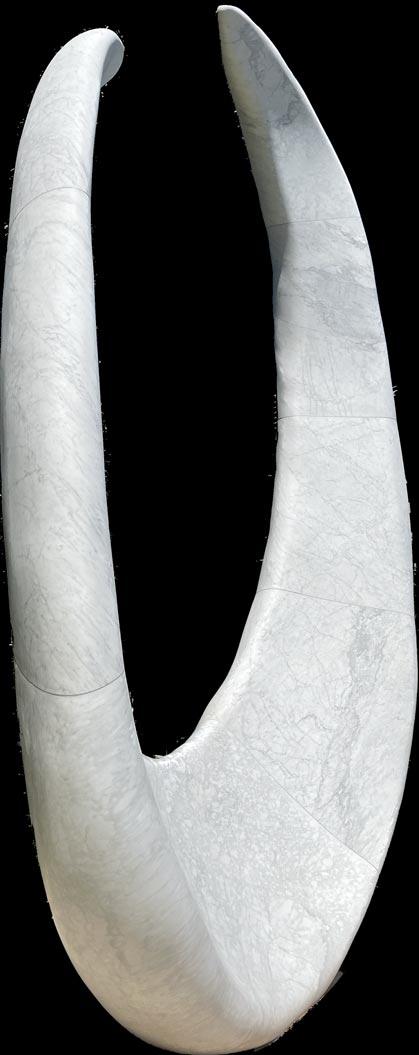
“The crescent shape of the bara is a beautiful expression of Aboriginal technology, used by women wh dangled them from their gnaw (canoes}. bara is a reflection o the moon in the sky and the bays of the harbour, echoing the sails of the Sydney Opera House and Harbour Bridge.” — Judy Watson bara is a reminder of the enduring presence of the world’s oldest continuous culture at this historic site, which always was and always will be Aboriginal land.
– from the City of Sydney plaque in Royal Botanic Gardens, Sydney
in Victoria, Queensland, South Australia, Tasmania, and the Australian Capital Territory.
Principal considerations from treaty processes across the continent such as: it is important to work in stages, NSW Aboriginal community to lead the process, support of Aboriginal community is non-negotiable, treaty institutions and processes are to be independent of government, community awareness is vital, truth is essential for treaty, legislation and Commonwealth government.
Schedule of NSW Labor commitments to Treaty.
There are contracts and agreements between First Nations communities and the NSW government such as land rights, co-management, and resource benefit sharing. While these types of agreements can secure vital outcomes for First Nations Peoples, however, they are not a treaty.
It is acknowledged that Treaty is not a one-size-fits-all model. First Nations Peoples possess unique languages, cultures, lands, and dreamtime. The outcome of the Treaty process might not be a singular, allencompassing Treaty but a series of Treaties along the coast and across the lands.
First Nations Peoples, rights and cultures must be written into this nationshood on these their lands. Whatever the nature of the treaty, it is not merely a legislative instrument. It is sacred, and is to be led by the First Nations Peoples and for the First Nations Peoples.
Acknowledgement: I extend my heartfelt acknowledgment to Norma Ingram, Harry Allie and Lawrence Gilbert. Their guidance is invaluable to me as I learn, walk and navigate on these lands of the First Nations Peoples.
This referendum is about straightforward ideas and practical solutions:
n Recognising and respecting 65,000 years of Indigenous culture for the first time in Australia’s 122year-old constitution.
n Listening to advice from Aboriginal and Torres Strait Islander people about matters that affect their lives, so governments make better decisions.
n Protecting the Voice from politics and bureaucrats by putting it in the constitution, giving it the security it needs to provide meaningful and honest advice.
n More than 80% of the Aboriginal and Torres Strait Islander community support this proposal. It has been designed and agreed on by Indigenous leaders over many decades.
ISV Board members, staff, members and supporters have been active in the community leading into the Referendum. We have been at all the events featured on pages 14-19 and many others in support of the Voice to Parliament. The ISV board publicly endorsed a YES vote in July 2023.
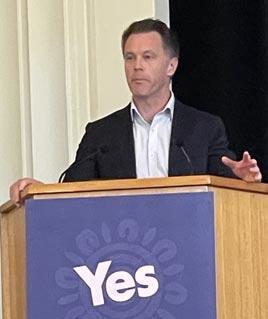
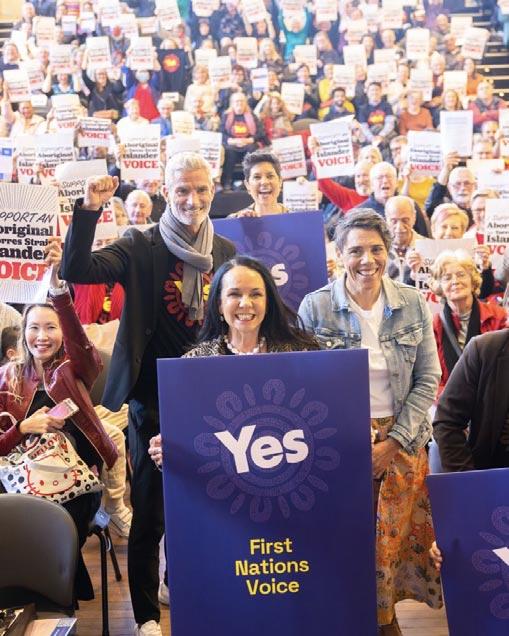
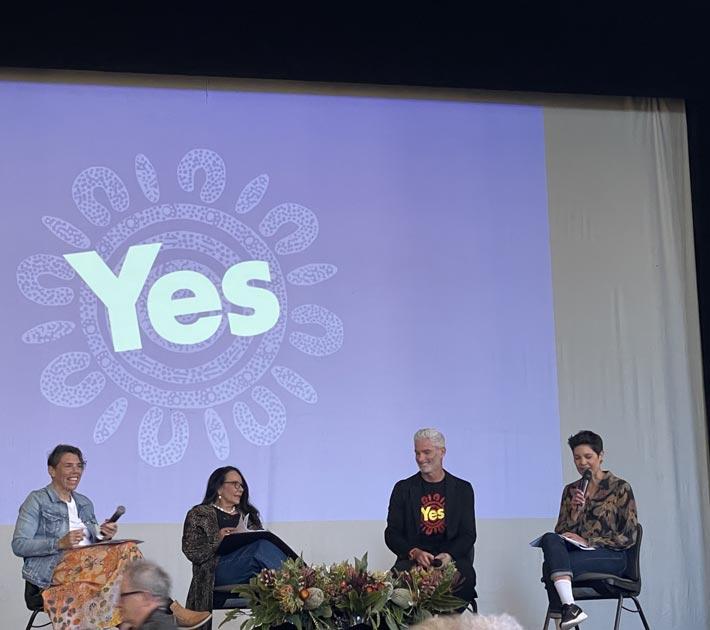
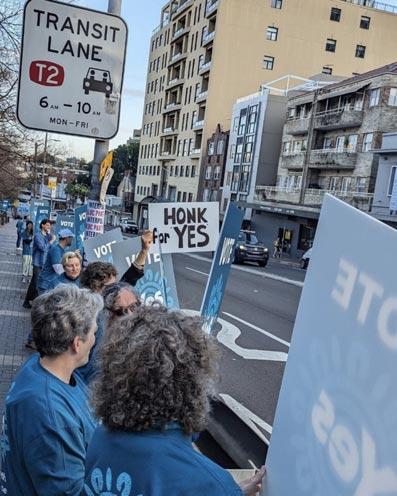
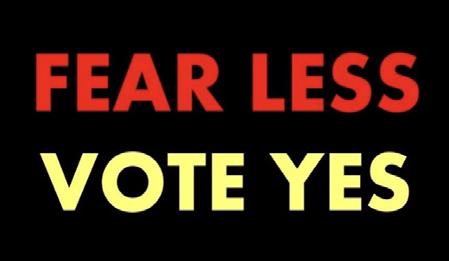
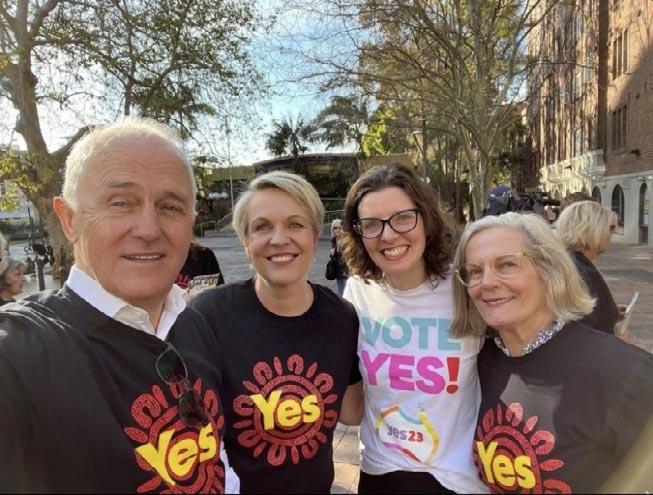
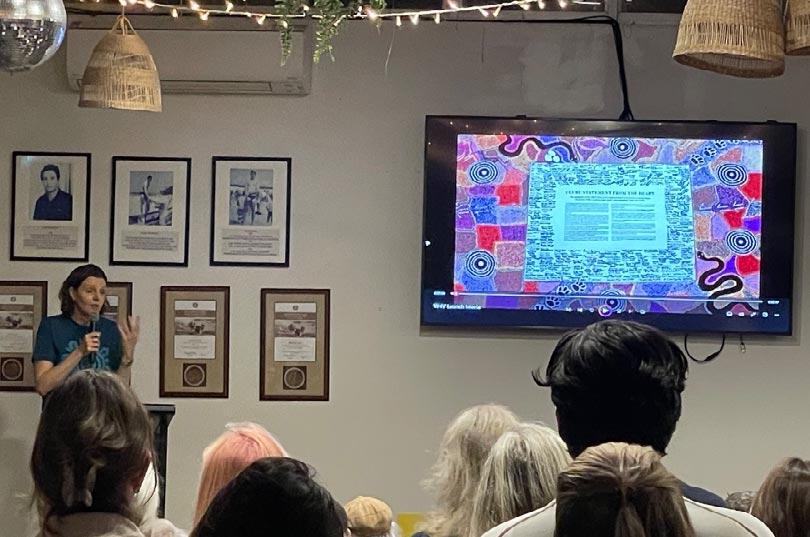
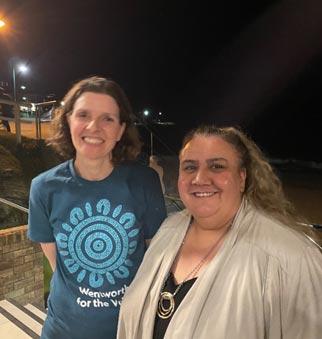
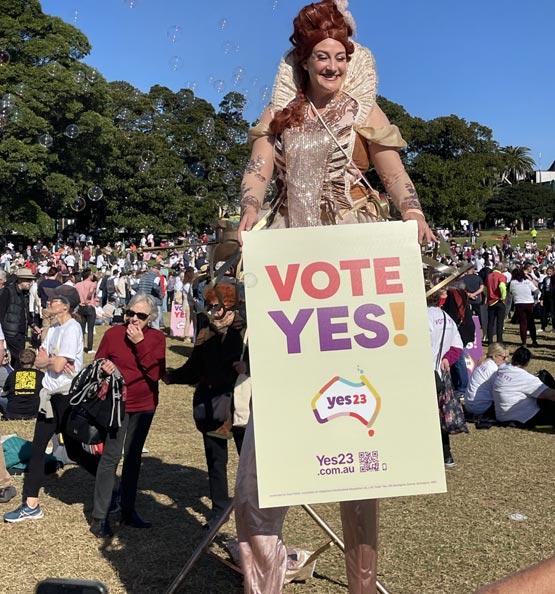
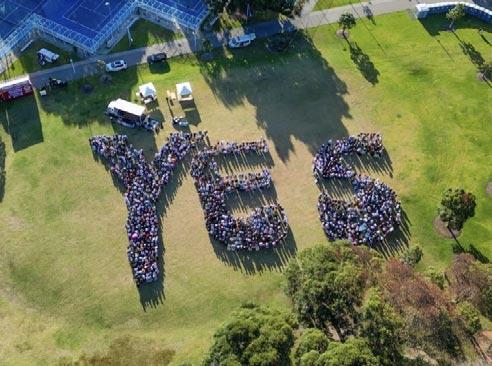
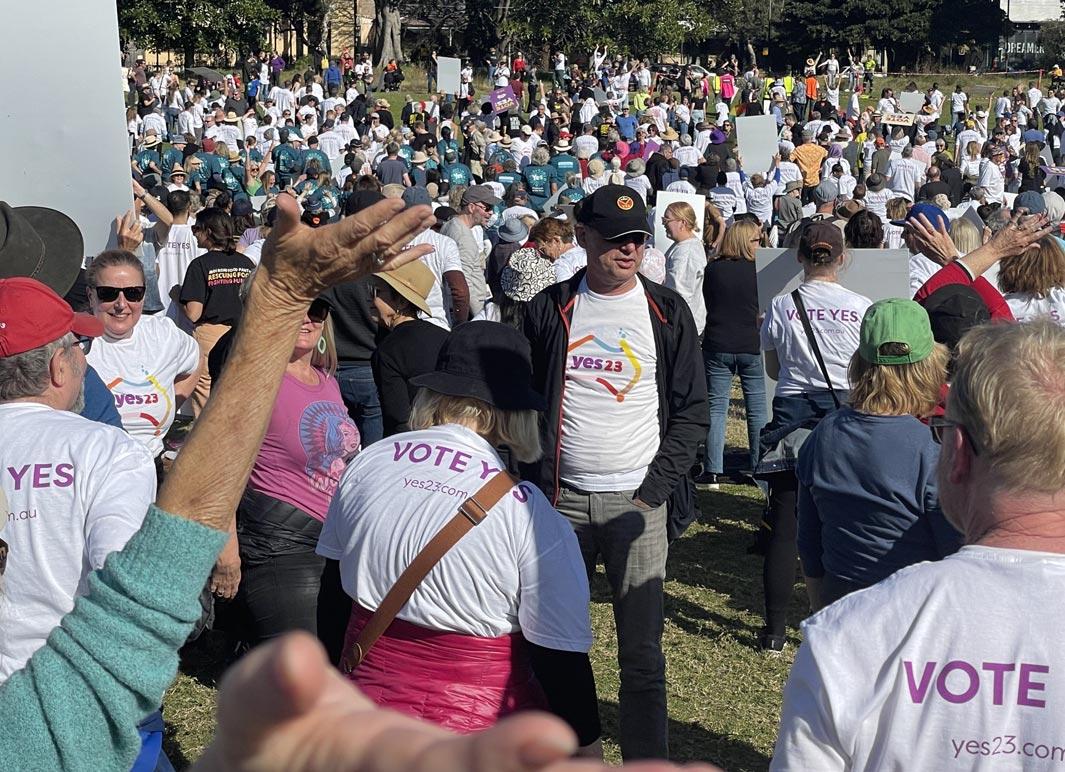
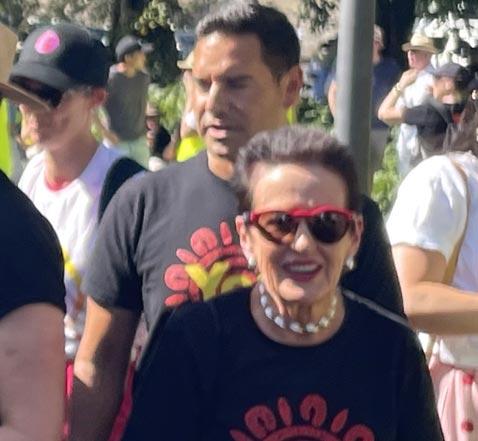
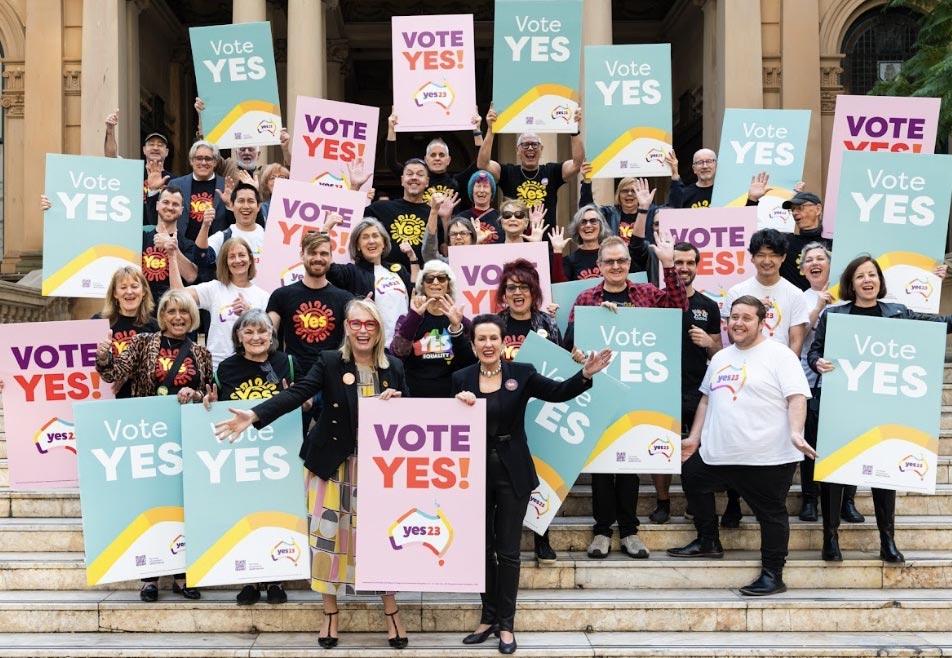
“As the lord mayors of Australia’s two largest cities, today we stand united for YES23, because we believe a Voice to Parliament is essential for all Australians. Today we visited volunteers making phone calls in the YES23 NSW campaign headquarters, a space provided by the City of Sydney.
Our history, particularly in relation to Aboriginal and Torres Strait Islander communities, includes events and attitudes that our current policies and initiatives need to redress. By acknowledging our shared past, we are laying the groundwork for a future which embraces all Australians, a future based on mutual respect and shared responsibility for this land.
The Voice won’t fix the wrongs of the past, but it is an important step.
We will be voting Yes, and we hope you do, too.”
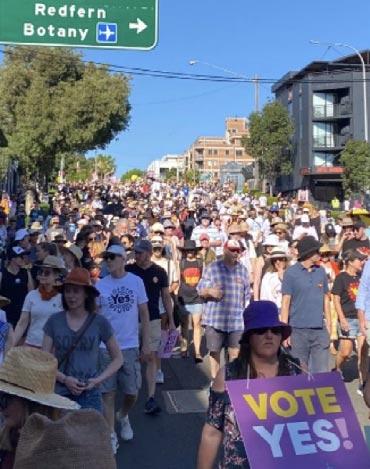
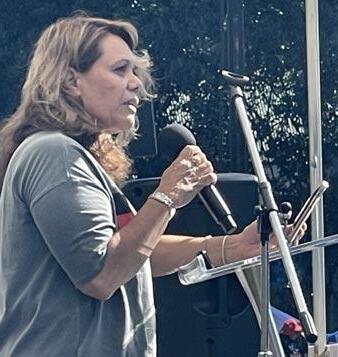
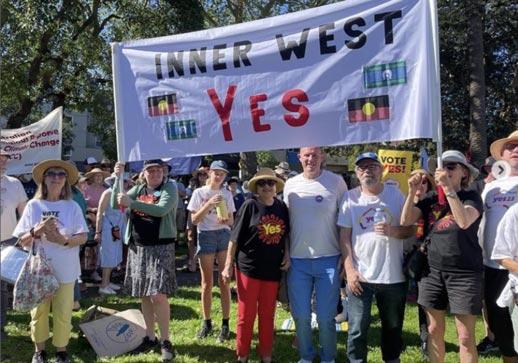
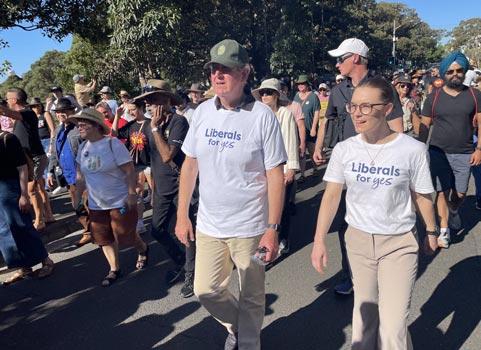
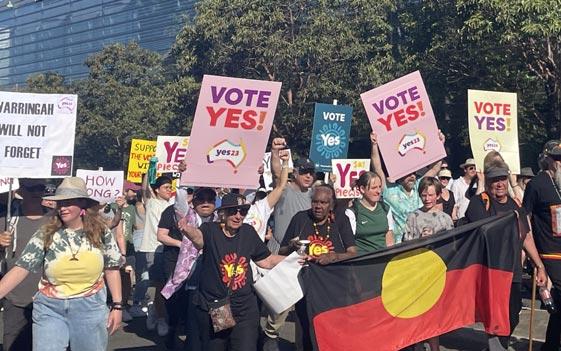
REDFERN PARK TO VICTORIA PARK | 17 SEPTEMBER 2023
ESTIMATED CROWD 30,000
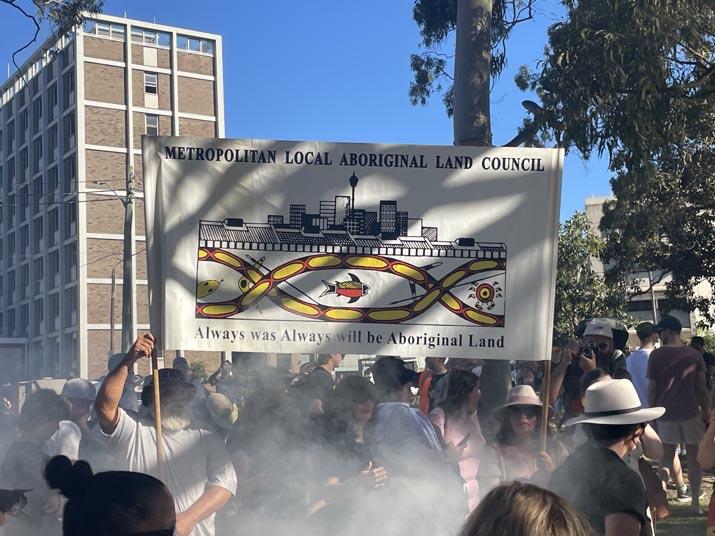
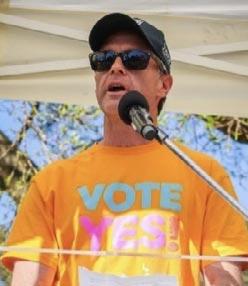
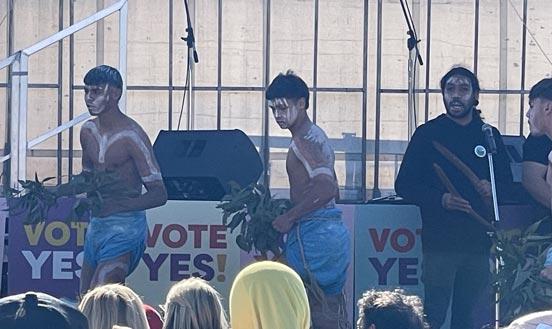
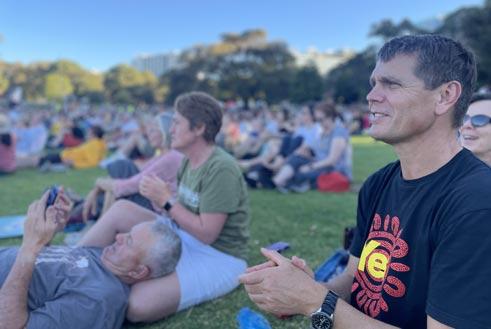
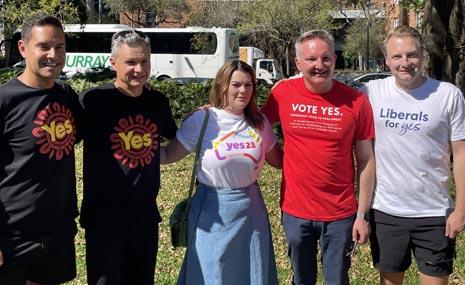
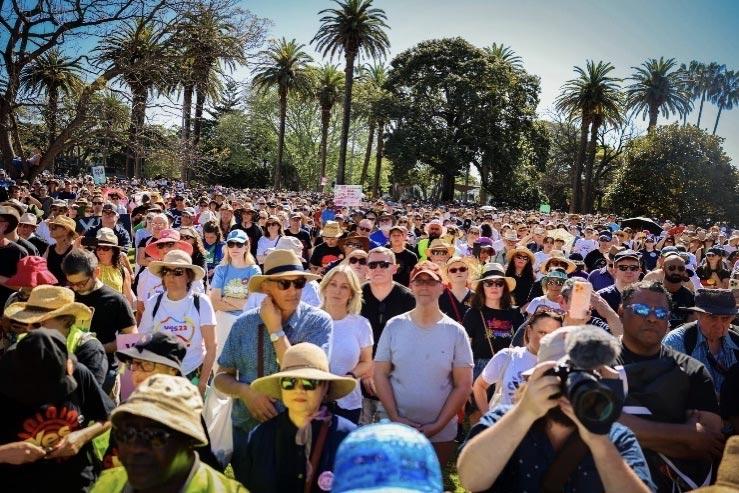
The traditional lands of the First Nations people that are now referred to as the Inner Sydney Region, were the first to have contact with Cook and be inhabited by the First Fleet. The resultant death from colonialisation – disease, war, murders, dispossession –severely impacted the First Nations people of the Inner Sydney Region.
The First Nations cultural, ceremonial, clanship, environmental and economic systems were decimated. Sites nurtured for millennia – overtaken and destroyed. What was sacred became just land taken by the white ‘visitors’ for agriculture, housing, government and commerce. Wilful ignorance of the pre-existing land ownership and economic systems soon turned to competition and mass annihilation and the forced removal of First Nations people from their lands –their spiritual connection to Country severed. Despite this, contemporary First Nations people are reclaiming their culture and are generous in their willingness to share their culture, wisdom and understanding with the people from the many countries that
comprise the nation of Australia.
The ISV region overlaps with the lands managed by the Metropolitan Local Aboriginal Land Council (MLALC) and the La Perouse Local Aboriginal Land Council (LPLALC). These bodies are comprised of elected First Nations People and are established under the NSW Aboriginal Land Rights Act 1983. Each Local Aboriginal Land Council are:
a. to improve, protect and foster the best interests of Aboriginal persons within the Council’s area and other persons who are members of the Council, and
b. to relieve poverty, sickness, suffering, distress, misfortune, destitution and helplessness of Aboriginal persons within the Council’s area.
As a starting point, ISV contacted the Local Aboriginal Lands Councils to seek advice that our representation of the traditional people in the six local government areas which comprise the ISV region are appropriate. As such we have drawn on the resources of the Land Council and local government in preparing this information.
The Metropolitan Local Aboriginal Lands Council covers most of Sydney, excluding the coastal areas from South
Head to Botany Bay, which is the province of the La Perouse Local Aboriginal Lands Council.
Commencing on the shore of the South Pacific Ocean at Barrenjoey Head: and bounded thence by the Hawkesbury River (excluding Milson Island) and Mangrove Creek (excluding Triangle Island) upwards to the southern prolongation of The Rugby Track; by that prolongation and track generally northerly to the generally southern boundary of the Parish of Hay, County of Northumberland; by part of that boundary generally south-easterly to Walkers Ridge Forest Road; by that road generally north-easterly and Murrays Forest Road generally westerly to the source of the Back Arm; by that arm and Wantagan Creek downwards and Wollombi Brook upwards the road from Wollombi to Martinsville via Laguna.
By that road north-westerly, the road from Laguna to Yango and its continuation generally westerly, Boree Track generally south-westerly and Yango Track generally north-westerly to northern boundaries of the parishes
of Finchley and Cosgrove; by those boundaries generally westerly to Macdonald River.
By that creek and Georges River downwards to the Captain Cook Bridge; by that bridge northerly to the left bank of Georges River; by that bank generally north-easterly and part of the generally western shore of Botany Bay generally northerly and south-easterly to East Hills Railway; by that railway easterly to Salt Pan Creek; by that creek and Georges River downwards to the Captain Cook Bridge; by that bridge northerly to the left bank of Georges River.
By that river downwards to the generally southern boundary of the Parish of Putty, County of Hunter; by that boundary westerly, southerly and again westerly, part of the generally south-western boundary of the Parish of Weeney generally south-easterly and generally northern boundary of the Parish of Wollemi generally westerly to Wollemi Creek; by that creek, Colo River and Hawkesbury River, aforesaid, downwards to the Vehicular Ferry Crossing at Wisemans Ferry; by that crossing south-westerly to Old Northern Road; by that road generally southerly, Hastings Road north-easterly, New Line Road generally southeasterly, David road south-westerly, south-easterly and again southwesterly, Castle Hill Road easterly and Highs Road and its prolongation generally south-westerly to Mills Creek; by that creek downwards to James Ruse Drive; by that drive generally south-easterly and southerly, Victoria Road generally easterly, Silverwater
Road generally southerly, Parramatta Road south-easterly, Percy Street south-westerly, Boorea Street southeasterly, Olympic Drive and its continuation across the Main Suburban Railway generally south-easterly and southerly, Bridge Street south-easterly, Joseph Street southerly, Hume Highway generally north-easterly, Stacey Street North and Stacey Street South generally southerly, Homedale Road and its prolongation generally south-westerly, Warren Avenue southeasterly, Canterbury Road southwesterly, Fairford Road southerly and Davies Road generally south-easterly to the East Hills Railway; by that railway easterly to Salt Pan Creek.
By that bank generally north-easterly and part of the generally western shore of Botany Bay generally northerly and south-easterly to the generally western boundary of the Municipality of Botany; by part of that boundary northerly to General Homes Drive; by that drive northeasterly and generally northerly, Botany Road south-easterly, Wentworth Avenue generally easterly, Southern Cross Drive generally northerly, Oxford Street north-westerly and Victoria Street and its prolongation generally northerly to Port Jackson; by the centre of that port generally northeasterly to Outer North Head; and by the shore of the South Pacific Ocean, aforesaid, generally northerly to the point of commencement.
Aboriginal people have inhabited the Botany Bay area for thousands of years. When the British settled at Botany Bay in 1788, around 1,500 Aboriginal people were estimated to have lived between Broken Bay and Botany Bay.
The La Perouse Aboriginal Community is the longest functioning and only discreet Aboriginal community in Sydney. Many descendants of the families continue to live within the La Perouse Aboriginal community where they maintain their cultural connection to the coastal Sydney region.
The La Perouse Local Aboriginal Land Council’s (LPLALC) statutory boundary covers the local government areas of Woollahra, Waverly, City of Sydney (in part), Randwick, Bayside (in part) and Sutherland Shire (in part), as indicated in the maps above.
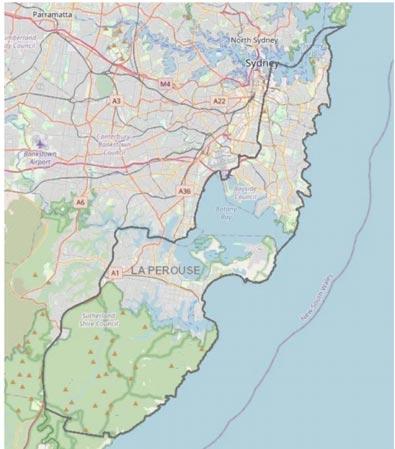
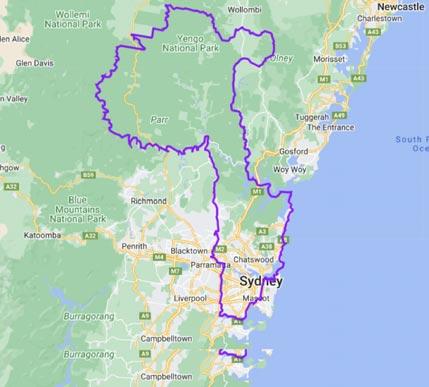
Asearch of the Australian Government Organisations Register (AGOR)
Current Bodies shows there were 1,312 Commonwealth bodies at 30 June 2023. There are 12 categories of bodies. Advisory Body – Policy and Stakeholder Consultation might most closely reflects the proposed charter of the Voice. Of these, 290 bodies listed as D.
Lots of groups appropriately have a voice to government – this is as it should be. However, it is deplorable that there is no ongoing national mechanism for First Nations people to
express their Voice at a local, regional, state and national level.
Who does have a Voice to Government?
A range of population and industry based advisory bodies are listed including:
n Aged Care Quality and Safety Advisory Council
n Agriculture Consultative Committee
n APEC Business Advisory Council
n Australia Japan Foundation
n Australia-ASEAN Council
n Australia-India Council
n Australia-Indonesia Institute
n Australia-Japan Foundation
n Australia-Korea Foundation
n Bankruptcy Reform Consultative Forum
n Council of Elders (to consult senior Australians on aged care)
n eSafety Advisory Committee
n Firearms and Weapons Policy Working Group
n Forces Entertainment Board
n HIV Taskforce
n Large Business Stewardship Group
n Manufacturers’ Licensing Scheme/ Industry Liaison Committee
n Markets Taskforce Expert Advisory Board
n Modern Slavery Expert Advisory Group
n National Aged and Community Care Forum
n National Foundation for AustraliaChina Relations (NFACR)
n National Multicultural Advisory Group
n National Recreational Fishing Council
n Older Australians Working Group
n Prime Minister’s Business Advisory Council
n Science and Industry Technical Advisory Group
n Tax Practitioner Stewardship Group
n Tourism Access Working Group
n Tourism Research Committee
n Women’s Economic Equality Taskforce
n Youth Steering Committee
What First Nations Advisory bodies to the Commonwealth are there?
Those advisory bodies exclusively dealing with the First People of Australia appear limited to some specific program or technically focused groups:
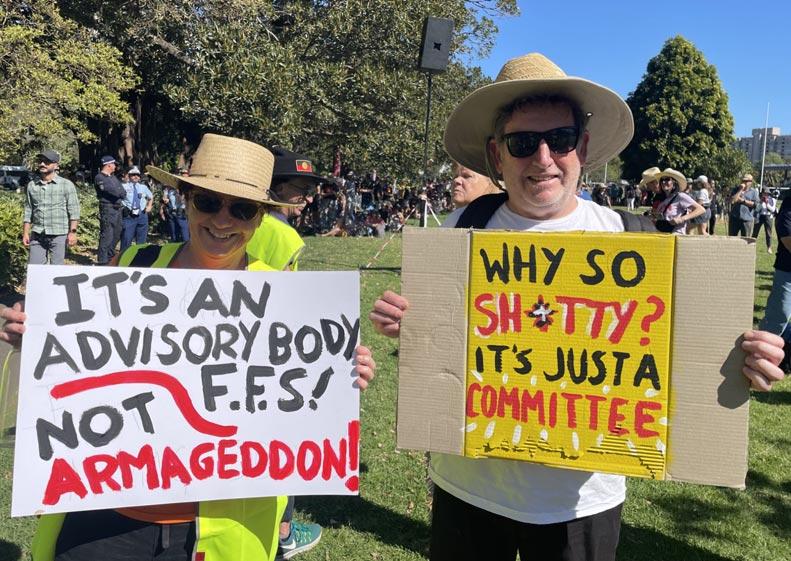
n Aboriginal and Torres Strait Islander Mental Health and Suicide Prevention Advisory Group
n Territories Stolen Generations Redress Scheme External Advisory Board
n Indigenous Evaluation Committee
n Advisory Committee for Indigenous Repatriation
n Territories Stolen Generations Redress Scheme External Advisory Board
n First Nations Youth Advisory Group
n First Nations Digital Inclusion Advisory
n First Nations Clean Energy and Emissions Reduction Advisory Committee
Those relating to the Voice are time limited:
n National Co-Design Group
n Local and Regional Co-design Group
n Senior Advisory Group
n Constitutional Expert Group
n Referendum Working Group
n Referendum Engagement Group
It is self-evident there is currently not an ongoing representative mechanism for a First Nations Voice to executive government or parliament.
Currently, fire arms and weapons experts get a voice; tax practitioners get a voice; large business gets a voice; agriculture gets a voice; other population groups get a voice, other nations trading with Australia get a voice . . . but Australia’s First People do not. This is a significant and deplorable omission that needs to be addressed by an enshrined Voice in the Constitution – with the form of that advisory body determined by the Commonwealth parliament.
We know that where advisory bodies are established administratively, they can be abolished at the whim of a minister or prime minister where the advice is not palatable. Speaking Truth to Power requires not only courage, but some constitutional and/or legislative safeguards. Enshrining the Voice in the constitution will mean there will be on an ongoing a body for a First Nations Voice. Its establishment and continuation should not at the whim of
the party in power, but an expressed view of all Australians via the Australian parliament. Such constitutional enshrinement means that only parliament — with the consent of both Houses — can change the construction, status, and powers of the Voice. The current proposal rightly confers the power to legislate on the Parliament aas-whole after a vote from the Australian people.
Constitutional enshrinement of the Voice both curtails the excesses of any future government not wishing to hear the Voice of Australia’s First People, and removes the power of such a government to abolish the Voice unilaterally – as was the case with various previous bodies such as the Aboriginal and Torres Strait Islander Commission. It also provides a check on such a body should it need to be reformed in the future as agreed by the whole Parliament (rather than a disgruntled minister or prime minister).
The Voice mechanism is the first step to enable a process for coming to agreement between sovereign First Nations people, the Australian government, and the Crown. It is a means to an end, rather than an end in itself.
In September 2010, Kristina Keneally (the then Member for Heffron, Premier, and Minister for Redfern Waterloo) introduced a bill to the NSW Parliament for the purpose of honouring and recognising the unique historical position of Aboriginal people in NSW.
Present at that time were many Aboriginal leaders, including Bev Manton, Chairperson of the NSW Aboriginal Land Council, a proud member of the Worimi nation and Uncle
Charles ‘Chicka’ Madden, a most respected Gadigal elder, Director of the Aboriginal Medical Service, member and representative of the Metropolitan Local Aboriginal Land Council, Director of the Aboriginal Hostels NSW and a life member of the Redfern All Blacks.
The NSW Constitution 1902 (NSW) was amended to insert a new section 2A:
a. The People and Parliament of New South Wales acknowledge and honour the Aboriginal people as the first people and nations of the State, and
b. The People and Parliament of
New South Wales recognise that Aboriginal people have a spiritual, social, and cultural relationship with their traditional lands and waters and have made a unique and lasting contribution to the identity of New South Wales.
c. Nothing in this section creates in any person any legal right or gives rise to any civil cause of action, or affects the interpretation of this Act or any other law in force in New South Wales.
On 16 June 2010 the then Premier Kristina Keneally said, “Constitutional recognition reminds us that the determination to close the gap in a range of indicators continues.” The then Minister for Aboriginal Affairs, Paul Lynch, said the proposal was “about acknowledging history, what’s happened in the past and it's also about truth telling”. Elsewhere the then Minister for Aboriginal Affairs said “There’s no reason why you can't do symbols and also practical measures at the same time.” These sentiments hold true today.
For Linda Burney, then NSW Minister for the State Plan and Minister for Community Services, and the first Aboriginal Australian elected to the NSW parliament, constitutional recognition “is another significant step in recognising Aboriginal people in NSW”, Ms Burney indicated: “This formal recognition is very important to the Aboriginal community. It’s a sign of respect and it has come at a time when the issue of racism has reared its ugly head again. This constitutional recognition will go some way to healing wounds.”
The proposal was welcomed by the NSW Aboriginal Land Council, the then Chairwoman Bev Manton commenting: “It has taken 108 years to recognise Aboriginal people in the NSW Constitution. That’s obviously a very long wait, but it’s extremely heartening that the Keneally Government has recognised the importance of this symbolic gesture.”
The Hon. John Hatzistergos, the then NSW Attorney General, Minister for Citizenship, Minister for Regulatory Reform, in his Second reading speech said:
Our intention is to provide recognition, recognition that is long overdue. One hundred and eight years after its first passing our Constitution Act will acknowledge the first communities, the first nations, of what is now our State. While noting that this recognition is
overdue this Parliament can still take pride in the steps we have already taken to honour and recognise our Aboriginal communities, perhaps most notably in the passage of the Aboriginal Land Rights Act 1983. As well as taking real steps to redress the injustice and neglect of Aboriginal needs this Act included in its preamble an important statement by the Parliament on the spiritual, social, cultural and economic significance of land to the Aboriginal people of New South Wales.
We now understand that this recognition should extend further, that it should not be bound to a single issue or Act but expressed as a principle of our democratic foundation so we are enshrining fundamental truths—the truth that our Aboriginal people are the first inhabitants of New South Wales; the truth of the spiritual, cultural and economic ties that bind our Aboriginal people to their traditional lands and waters; the truth in the diverse and unique contributions that our many Aboriginal nations, cultures and communities make to the life, economy and character of our State.
Now some may say that this legislation is ‘symbolism’ but I trust that those who do also know the importance of symbols and their power to inspire and to shape our attitudes and actions. I trust
they understand that the icons of our national and cultural identity are of themselves merely symbols. And I ask them to consider how they might feel if they had to live their lives in the absence of these symbols, in the absence of the recognition they proclaim, and in the absence of the identity they publicly provide.
In short, NSW successfully changed its constitution to acknowledge the First People of NSW and there have been no adverse consequences of this symbolic recognition. Based on this precedence, recognition of the First People in the Constitution of Australia should not result in adverse outcomes but is simply another step in truth telling and reconciliation. It is true that Aboriginal people were the First People of Australia. It is true we need a Treaty. It is important that we have a process of truth telling. Without these elements, we cannot be a fully civil society; we cannot be a modern vibrant community without shame.
However, is a Voice to Parliament sufficient to Close the Gap? ISV confirms that the answer is a resounding NO! The welldocumented gap in life outcomes of First Nations people in NSW and Australia compared to other Australians is stark. The Voice is a further step to redress this gap. Other key elements outlined in the Uluru Statement from the Heart are Truth Telling and Treaty. ISV support Voice Truth and Treaty as being a away forward at both a state and national level. This issue can’t be resolved by First Nations people alone. With 3% of the population, First Nations people must rely on the 97% to get this done.
This issue can’t be resolved by First Nations people alone. With 3% of the population, First Nations people must rely on the 97% to get this done.
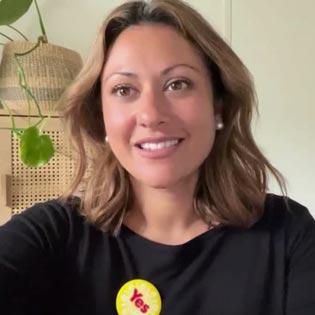
FREQUENTLY ASKED QUESTIONS IN AN RAPID-FIRE INTERVIEW WITH NARELDA JACOBS ON CHANNEL 10 ON 30 AUGUST 2023.
1. Is the Voice to Parliament the Prime Minister’s Plan?
Absolutely not. This has come from Indigenous People.
2. Is the Uluru Statement from the Heart a 26-page document?
It’s a one-page document; 440 words.
3. By amending the Constitution, does it insert race into the constitution? Well, the race power exists in the constitution and to date it’s been used to harm us.
4. Does it give First Nations people special rights?
It’s an advisory body that will simply give good advice to government. It has no veto power.
5. Why can’t the Voice just be legislated rather than Constitution change? What we’ve learned in the past is that just to legislate and not have the security of the Constitution make us vulnerable to political football.
6. Do First Nations people even want this?
Absolutely! Over 80% of Indigenous people, so an overwhelming majority of Indigenous want this.
7. Will members of the advisory group be handpicked elites? Members of the Voice will be
democratically voted by in by Indigenous people.
8. Don’t first nations people already have voices in Parliament? So we have 11 parliamentarians who are Aboriginal or Torres Strait Islander and they represent their constituents in the electorate and also their political parties. So very different to an independent voice.
9. Will it make a practical difference?
Absolutely! We know that communities that are heard really thrive.
Over 80% of Indigenous people want the Voice.
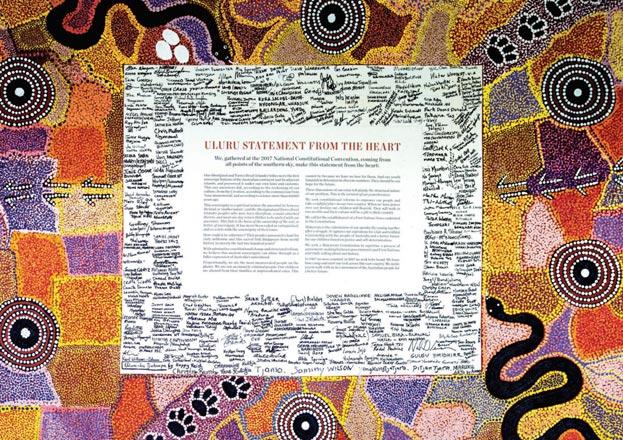
We, gathered at the 2017 National Constitutional Convention, coming from all points of the southern sky, make this statement from the heart:
Our Aboriginal and Torres Strait Islander tribes were the first sovereign Nations of the Australian continent and its adjacent islands, and possessed it under our own laws and customs. This our ancestors did, according to the reckoning of our culture, from the Creation, according to the common law from ‘time immemorial’, and according to science more than 60,000 years ago.
This sovereignty is a spiritual notion: the ancestral tie between the land, or ‘mother nature’, and the Aboriginal and Torres Strait Islander peoples who were born therefrom, remain attached thereto, and must one day return thither to be united with our ancestors. This link is the basis of the ownership of the soil, or better, of sovereignty. It has never been ceded or extinguished, and coexists with the sovereignty of the Crown.
How could it be otherwise? That peoples possessed a land for sixty millennia and this sacred link disappears from world history in merely the last two hundred years?
With substantive constitutional change and structural reform, we believe this ancient sovereignty can shine through as a fuller expression of Australia’s nationhood.
Proportionally, we are the most incarcerated people on
the planet. We are not an innately criminal people. Our children are aliened from their families at unprecedented rates. This cannot be because we have no love for them. And our youth languish in detention in obscene numbers. They should be our hope for the future.
These dimensions of our crisis tell plainly the structural nature of our problem. This is the torment of our powerlessness.
We seek constitutional reforms to empower our people and take a rightful place in our own country. When we have power over our destiny our children will flourish. They will walk in two worlds and their culture will be a gift to their country.
We call for the establishment of a First Nations Voice enshrined in the Constitution.
Makarrata is the culmination of our agenda: the coming together after a struggle. It captures our aspirations for a fair and truthful relationship with the people of Australia and a better future for our children based on justice and self-determination.
We seek a Makarrata Commission to supervise a process of agreement-making between governments and First Nations and truth-telling about our history.
In 1967 we were counted, in 2017 we seek to be heard. We leave base camp and start our trek across this vast country. We invite you to walk with us in a movement of the Australian people for a better future.
Tony has travelled the world, met and lived with people in Canada, India, South East Asia, the US, Europe and of course Australia.
He reflects on his early days as a “fresh off the boat” migrant arriving in South Australia. He had begun his wresting career and had the privilege of meeting his friend George, a Kokathya Man on a hunting trip.
It was 1959 and Tony remembers that despite their language differences they managed to communicate about the land, hunting for food and the importance of family.
He also understood the hurt and pain George had endured by white colonialists in this new land and felt guilty that as a new Australian, he now had more power and rights than George and his people. It just didn’t make sense.
He has seen disadvantage and the impact of colonisation and can’t help but think about his own story and his birthplace, Greece. Tony says he feels a natural solidarity with Aboriginal people and believes a Yes vote is an easy way for “New” and “All” Australians to recognise First Australians.
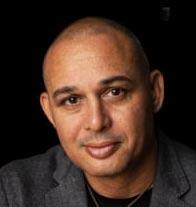
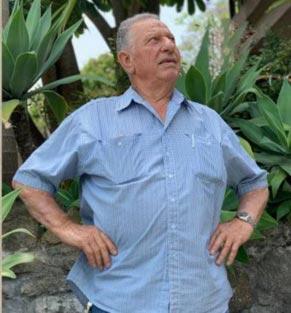
“. . . This is a great country. It is my home. It is where my family are. I am a porud Australian of Greek origin.” When discussing some of the myths about what a Yes vote could mean, such as losing your home to Aboriginal people, Tony laughs and says, “. . . That is just propoganda. You shouldn’t be afraid of your home being taken away by Aboriginal people – you should worry about the banks.”
The Centre is a member of ISV and Esta is a well-known and respected health and community care leader. She recently addressed the Greeks for YES event and spoke about why she is voting Yes and encouraging all Australians to do the same.
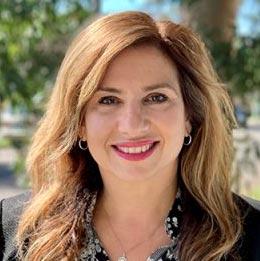
As the granddaughter of refugees forced to flee their Pontian (northern Greece) homeland, Esta told a packed Marrickville Library Pavillion that she feels that a YES vote acknowledges First Australians, thanks them for welcoming her family and allows her to grow her proud identity as an Australian of Greek origin.
YES CAMPAIGNER, SIGNATORY TO THE ULURU STATEMENT
Thomas says multicultural Australians are supporting a YES vote. He says, “The Yes campaign is buoyed by the support we are seeing from a broad range of ethnic and cultural groups across the country. We are building a movement that includes people from a wide range of backgrounds, beliefs, cultures and interests, and we encourage everyone to get behind this movement that will give Indigenous people a real say on matters that affect them.”
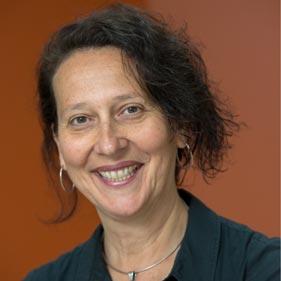
Sometimes we don’t even realise that now is an important time in history. We go about our day-to-day activities in our busy little worlds doing the things we need to do and choose to do. It is only in hindsight that we notice we were there. At a particular point in history, when it all changed.
My son recently asked me if I remembered key events in history? What was I doing and what did I think about the events at the time? Such a strange question from a 16-year-old. What do you mean by a key event? Do you mean the day you were born? The day I got my own driver's license. No, he said. Things that changed the world like when women got to vote.
It got me thinking about the key events in history that I have lived through. Like Marriage Equality, and later Voluntary Assisted Dying Law Changes. The Tampa Crisis that sent me marching and the horror of 9/11. I was also around when the Richmond Report focused on deinstitutionalisation and drove policy changes for people with disability and those living with mental ill health that charted my professional career path.
All this reflection made me think about what will happen when, in the future, my grandchild (if I’m lucky enough) asks me about the 2023 Voice to Parliament Referendum. This is a key event in history and I want to be clear and accountable to the next generation. I want to be able to say I did my best to talk with others. To understand. I voted Yes!
Inner Sydney Voice has always aligned with issues and strategies, ideas and thoughts that deliver social justice. American anthropologist Margaret Mead said, “All social change comes from the passion of individuals” and at ISV, at this time this has played out through our Chairperson Peter Connelly.
Peter has led the way to ensure Inner Sydney Voice would be an active participant in this historic event.
Peter will say he didn’t do that much and that others have done so much more. Maybe that is the case but I have seen him work hard to ensure others understood the context of this Referendum and understand the importance of their vote. He has collected evidence, written submissions and has written much of the content in this special edition of the Inner Sydney Voice Magazine. He has helped me understand, form a view and to have other conversations with others.
Through this publication and the valued conversations I have had with Peter and so many others, I am ready for the questions from the future generation. I am ready to be accountable for my own actions.
Inner Sydney Voice is the journal of the Inner Sydney Regional Council for Social Development Inc. We are a notfor-profit organisation committed to the idea of information as a tool for community development. Inner Sydney is defined as the LGAs of City of Sydney, Bayside, Randwick, Waverley, Woollahra, and Inner West.
ACKNOWLEDGEMENT OF COUNTRY
ISV office is located on the land of the traditional owners of the Gadigal people of the Eora Nation. We acknowledge and pay our respects to the traditional owners of the lands across the areas we service, including the Bidjigal, Birrabirragal, Gadigal, Gweagal and Wangal people. We acknowledge that sovereignty over these lands has never been ceded. ISV covers the local government areas of City of Sydney, Bayside, Randwick, Waverley, Woollahra, and the Inner West.
We pay our respects to Elders past and present.
ISV’s approach is to listen to and offer support to First Nations Communities around the Voice to Parliament in order to promote awareness and dialogue within the broader community. We note other States are establishing complementary Voices to State Parliaments and progressing consideration of state-based Treaties and a process of Truth Telling about the treatment of First Nations People in Australia since European Settlement.
CONTRIBUTORS
Peter Connelly | Marika Kontellis | Sumaya Sultana | Alexander Weilsmann
DESIGN Stevie Bee
MEMBERSHIP + SUBSCRIPTIONS Saskia Eichler-Cheney
PUBLISHER
Inner Sydney Regional Council for Social Development Inc trading as Inner Sydney Voice
ABN 86 770 127 254
Rear 770 Elizabeth Street Waterloo NSW 2017
PHONE 9698 7690 | EMAIL admin@innersydneyvoice.org.au
FACEBOOK facebook.com/innersydneyrcsd
TWITTER @innersydneyrcsd
WEBSITE innersydneyvoice.org.au
DISCLAIMER + COPYRIGHT
The opinions expressed in Inner Sydney Voice magazine do not necessarily represent the views of the publisher, the publication nor our funders. Unless stated otherwise, opinions belong to contributors, not the organisation or group with which they work. While every effort has been made to ensure the accuracy of the information, no responsibility can be accepted by the publisher for any contributions. Copyright belongs to the contributors.
Join and subscribe: Please see back cover
This is a key event in history and I want to be clear and accountable to the next generation. I want to be able to say I did my best to talk with others. To understand. I voted Yes!
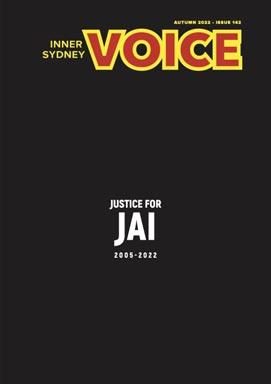
Inner Syndey Voice (ISV) has been a progressive documenter of community and social issues in the Inner Sydney region for the past 50 years. This is a communitydriven publication and relies on volunteer effort to ensure an authentic voice from the Inner Sydney region.
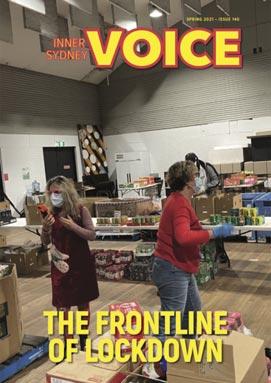
Inner Sydney Voice (the Inner Sydney Regional Council for Social Development) is a not-for-profit organisation that empowers people experiencing poverty, marginalisation and other forms of disadvantage to have an equal say in the big picture decisions that affect their lives and the prosperity of their communities.
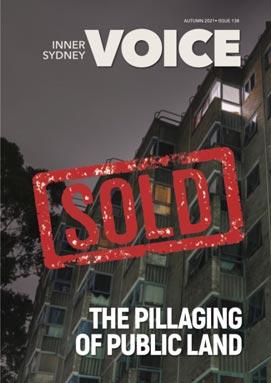
ISV supports disadvantaged and marginalised communities and those that work with them. Our current funded programs support those who work with children, young people, women, families, people surviving
domestic violence, frail older people, people living with disability and mental health issues, those with low incomes, people with dementia, those who are homeless, people exiting custodial care, people vulnerable to the impacts of climate change as well as people at risk of environmental conditions such as bushfires, other extreme weather events and natural disasters.
We are looking to grow our volunteer team to drive the next stage of this iconic publication. Specifically, we are looking for:
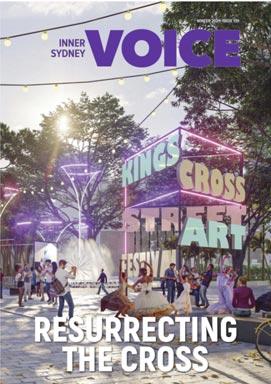
n Digital storytellers
n Anyone who can take a nice photo
n Content writers – anyone interested in writing articles affecting the community in Inner Sydney or contributing content for our digital media presence via posts, blogs and videos
n Proofreaders
n Graphic designers
n Social justice warriors
n Subject matter experts, academics
or those with lived experience .
Some of the current themes we are exploring centre on
n Belonging and Inclusion
n Reconciliation
n Reforming social care systems
n Overdevelopment and Gentrification
n Cost of Living
n Housing Affordability
n Loneliness and Social Isolation
n Accessible and affordable health care.
To find out more, email your expression of interest to admin @innersydneyvoice.org.au with a few lines about you and what you are interested in and we will be in touch.
n Next edition of the magazine is due in December 2023.
n Want to know more call us on 02 9698 7690.
In Australia, referendums are public votes held on important issues where the electorate may approve or reject a certain proposal. The term is commonly used in reference to a constitutional referendum which is legally required to make a change to the Constitution of Australia.
Did you know that since the Federation Government there have been 44 referendums in Australia? The Voice to Parliament will be the 45th referendum.
The first referendums in Australia were held in 1898 on the Commonwealth Constitution Bill. This was before “federation” and the referendum did not pass. On 22 September 1951, a referendum was held in Australia which sought approval to alter the Australian Constitution to give parliament the power to make laws regarding communism and communists, so that the Parliament would be empowered to instate a law similar to the Communist Party Dissolution Act of 1950. It was not carried.
The 1967 Australian referendum of 27 May 1967, called by the Holt government, related to Indigenous Australians. Voters were asked whether to give the federal government the power to make special laws for Indigenous Australians in states, [1] and whether Indigenous Australians should be included in official population counts for constitutional purposes. The term “the Aboriginal Race” was used in the question. Technically the referendum question was a vote on the Constitution Alteration (Aboriginals) Bill 1967 that would amend section 51(xxvi) and repeal section 127. The amendments to the Constitution were overwhelmingly endorsed, winning 90.77% of votes cast and having majority support in all six states. The Bill became an Act of Parliament on 10 August 1967.
Image source Unknown 1967

We’re always looking for new voices — opinion pieces, investigative articles, profiles of community organisations, interviews and more. If you have a feature idea, please contact the editor on 02 9698 7690 by email at admin@innersydneyvoice.org.au
Subscribe to keep informed about social issues impacting the inner Sydney region and to receive four issues of ISV every year.
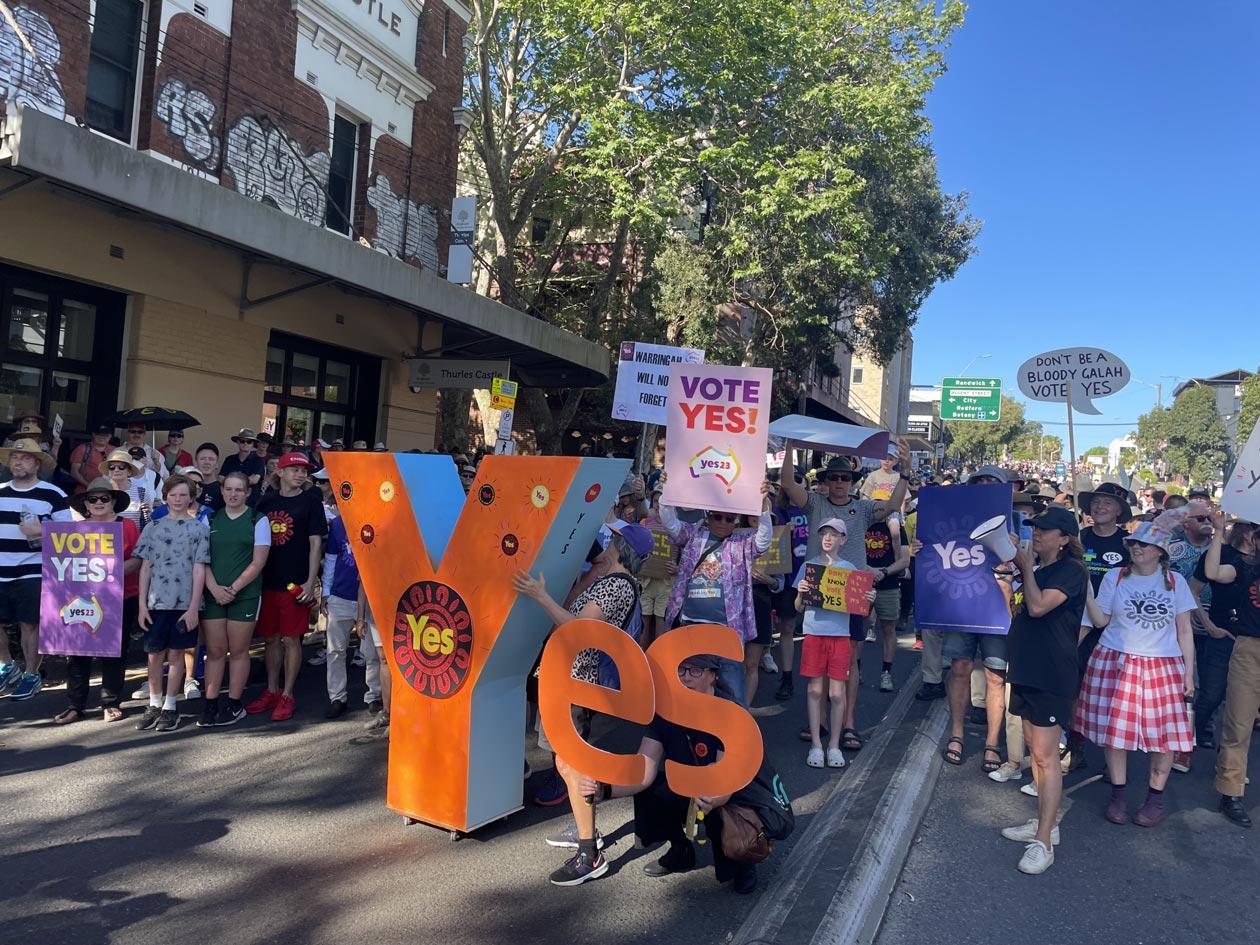
ORGANISATIONS $60 WAGED INDIVIDUALS $40 UNWAGED INDIVIDUALS $10
To subscribe to — or sponsor — the magazine, please contact our office on 02 9698 7690 or by email at admin@innersydneyvoice.org.au for more details.
If you’re a business and would like to sponsor Inner Sydney Voice magazine the rates are:
HALF PAGE AD $250 FULL PAGE AD $500 DOUBLE PAGE SPREAD $1,000
